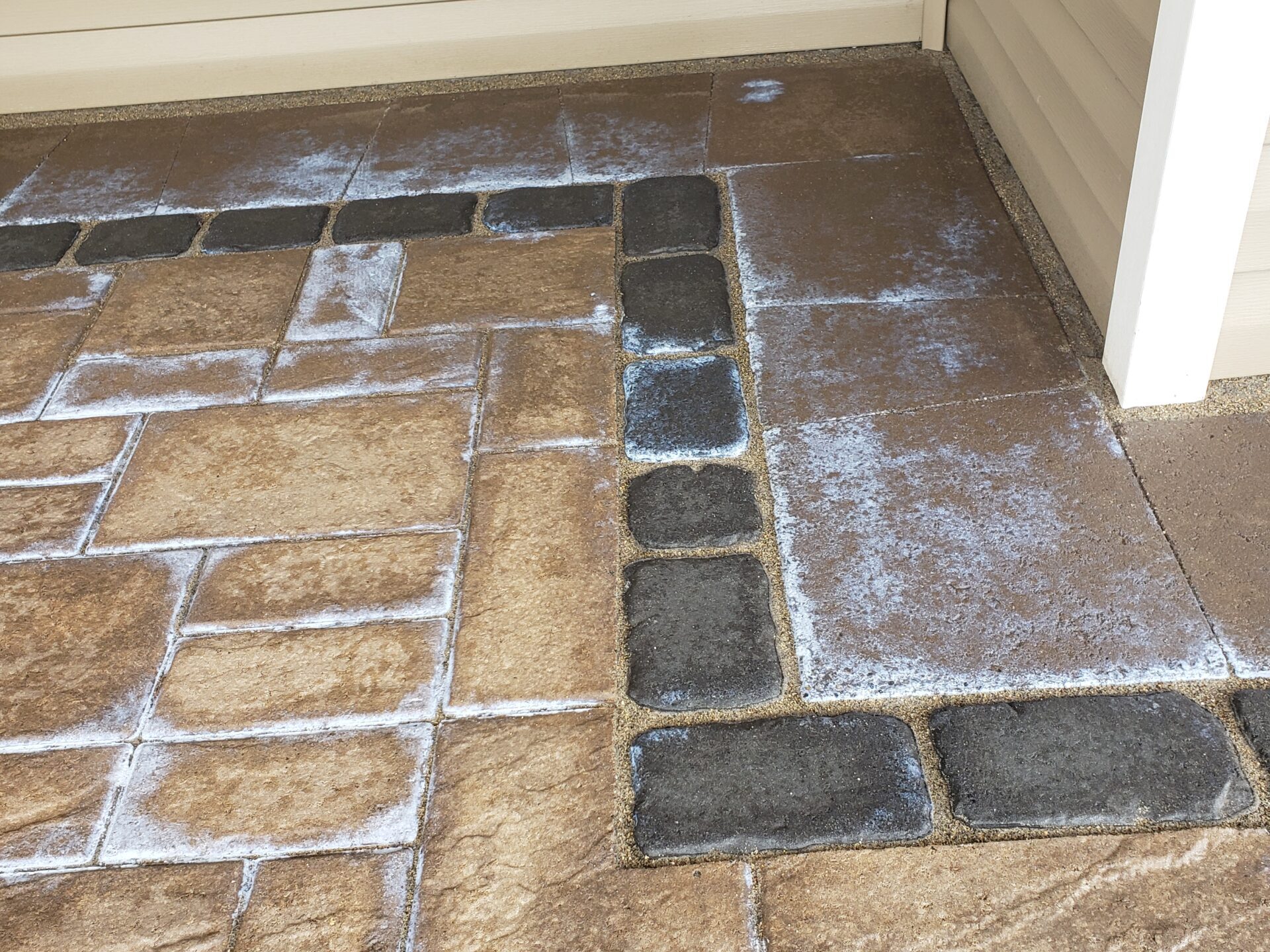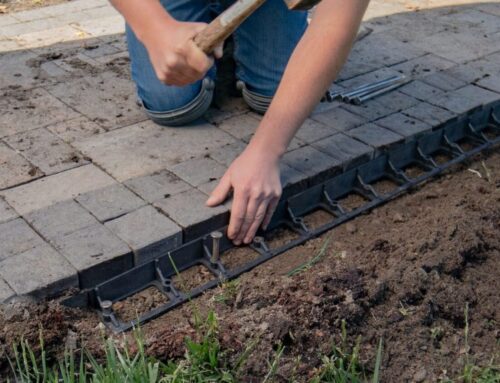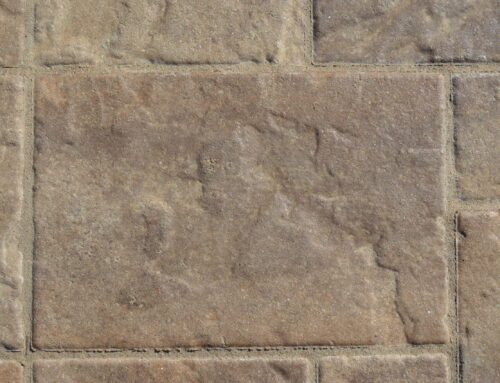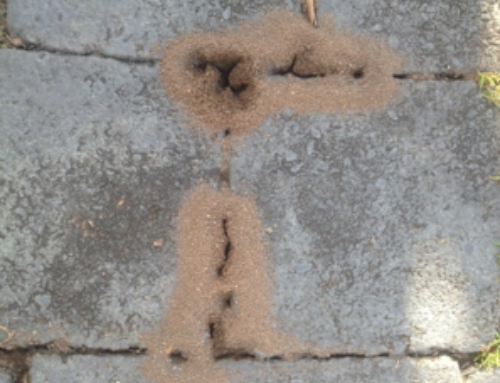Have you recently noticed a white residue on your pavers? Does it look something like this?
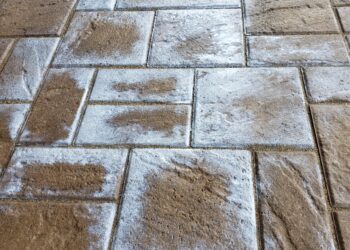
If what you have looks similar to this you are most likely dealing with efflorescence. Those of us in this industry call it efflo for short. And what is efflo exactly? The simplest description is a coating of salt deposits drawn out by water.
Where did it come from?
Pavers naturally contain salts that are embedded in the blocks when they are formed. These salts are present in most concrete products. The salts are drawn out to the surface due to moisture. Water flows through the pavers and dissolves the salt deposits. Then when the water dries whatever deposits are left on the surface of the paver recrystallize and leave behind the white, chalky residue.
In most cases efflo isn’t detectable until after the pavers are installed because that is when they start to become saturated with water during cleanings, rain, snow etc… So in summary, efflo isn’t something that’s happening to your pavers. It’s been there all along.
Identifying Efflo
How do you know for sure that what you’re seeing is efflorescence? You can do a simple water test. (Note: this may not work for highly affected areas where the salt is caked on thick) Pour water on the affected area and see if the white disappears and then reappears after drying.
You can also tell if the appearance of the efflo on the surface is changing. Because the salt will be constantly secreting from the pavers, every time it rains or the surface is cleaned the look can change. One week it can look lighter, one week it can look worse. This is usually more noticeable with paver walls, steps or firepits. If the white was a stain from some other substance it would not change in appearance from day to day.
How do I get rid of it?
A natural solution you can try is white vinegar. Dilute the vinegar with water first. Apply generously to the area. Scrub with a stiff brush and rinse. You may to repeat this process a few times as more efflo may be drawn out of the blocks in the process.
For more serious cases an efflorescence cleaner can be applied. We recommend having a professional do this as these cleaners contain strong and potentially dangerous chemicals.
If the cleaners are not successful than time may be. As there is no way to measure how much efflo resides within the paver so we can never put a specific timeframe as to how long it will take all of the salt deposits to dissolve away. But we can say that some problems do resolve themselves over time.
Having trouble with moss & mold? Check out our blog to learn more!

